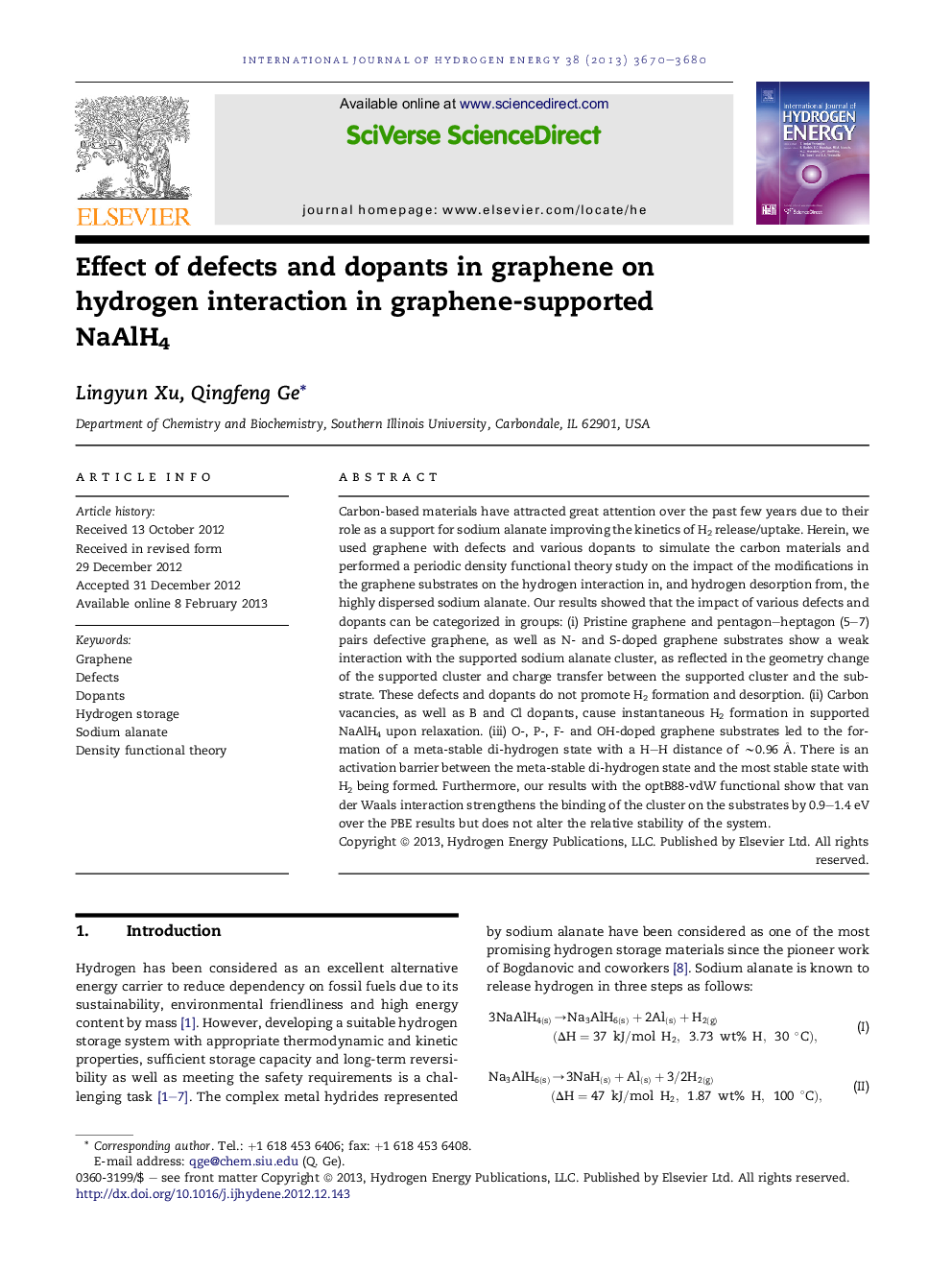| Article ID | Journal | Published Year | Pages | File Type |
|---|---|---|---|---|
| 1275584 | International Journal of Hydrogen Energy | 2013 | 11 Pages |
Carbon-based materials have attracted great attention over the past few years due to their role as a support for sodium alanate improving the kinetics of H2 release/uptake. Herein, we used graphene with defects and various dopants to simulate the carbon materials and performed a periodic density functional theory study on the impact of the modifications in the graphene substrates on the hydrogen interaction in, and hydrogen desorption from, the highly dispersed sodium alanate. Our results showed that the impact of various defects and dopants can be categorized in groups: (i) Pristine graphene and pentagon–heptagon (5–7) pairs defective graphene, as well as N- and S-doped graphene substrates show a weak interaction with the supported sodium alanate cluster, as reflected in the geometry change of the supported cluster and charge transfer between the supported cluster and the substrate. These defects and dopants do not promote H2 formation and desorption. (ii) Carbon vacancies, as well as B and Cl dopants, cause instantaneous H2 formation in supported NaAlH4 upon relaxation. (iii) O-, P-, F- and OH-doped graphene substrates led to the formation of a meta-stable di-hydrogen state with a H–H distance of ∼0.96 Å. There is an activation barrier between the meta-stable di-hydrogen state and the most stable state with H2 being formed. Furthermore, our results with the optB88-vdW functional show that van der Waals interaction strengthens the binding of the cluster on the substrates by 0.9–1.4 eV over the PBE results but does not alter the relative stability of the system.
► Effects of graphene with different midifiers on supported NaAlH4 were examined. ► Carbon vacancies, B and Cl dopants, cause H2 formation in supported NaAlH4. ► O-, P-, F- and OH-doped graphene lead to a meta-stable di-hydrogen state. ► Pristine graphene, 5–7 defect, N and S dopants do not promote H2 desorption.
